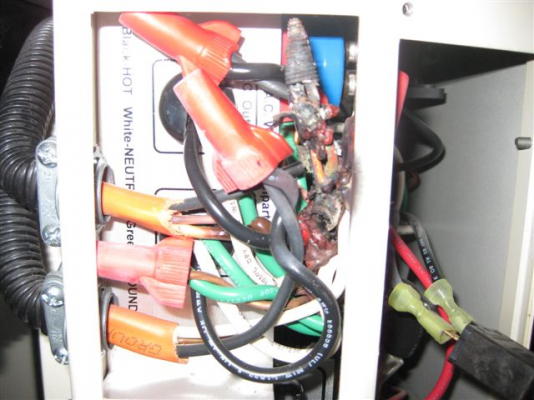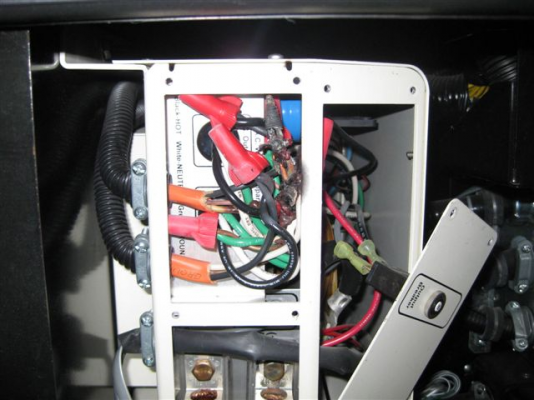JOLT
Member
- Joined
- May 5, 2010
- Posts
- 5
I thought for sure that if I overloaded the system a breaker would break as it had done before but not this time.
Winter time in MD on 50 amp service and running two 1500 watt space heaters as supplemental heat with temp below 35 degrees. We ran one up front on one GFI leg and the other in the bedroom using the other GFI leg. The coffee pot was on a timer and when it went off at 5 am with both space heaters running while running the whole house fan to circulate the heat it fried the inverter. It is amazing how we learn.
I was told by the tech at the dealership here in MD it was because the wire cap (s) had come loose. I think it was overload and the shop foreman agreed but you would think that a circuit breaker besides the GFIs would have popped first. The two GFIs had popped and could not be reset. Everything else in the Journey worked except those items running on 110 electrical outlets plus the TV. The gas furnace, electric hot water heater, refrigerator on electric and satellite all worked as normal.
After ours was diagnosed and fixed, a week later another Winnebago came in with the exact same problem.
Makes a blue flame heater an option if staying long term in below freezing weather. I have since had installed an Extend-a-Flow kit along with a 20ft high pressure hose and use an external tank.
Click on the pictures to enlarge.
Winter time in MD on 50 amp service and running two 1500 watt space heaters as supplemental heat with temp below 35 degrees. We ran one up front on one GFI leg and the other in the bedroom using the other GFI leg. The coffee pot was on a timer and when it went off at 5 am with both space heaters running while running the whole house fan to circulate the heat it fried the inverter. It is amazing how we learn.
I was told by the tech at the dealership here in MD it was because the wire cap (s) had come loose. I think it was overload and the shop foreman agreed but you would think that a circuit breaker besides the GFIs would have popped first. The two GFIs had popped and could not be reset. Everything else in the Journey worked except those items running on 110 electrical outlets plus the TV. The gas furnace, electric hot water heater, refrigerator on electric and satellite all worked as normal.
After ours was diagnosed and fixed, a week later another Winnebago came in with the exact same problem.
Makes a blue flame heater an option if staying long term in below freezing weather. I have since had installed an Extend-a-Flow kit along with a 20ft high pressure hose and use an external tank.
Click on the pictures to enlarge.


